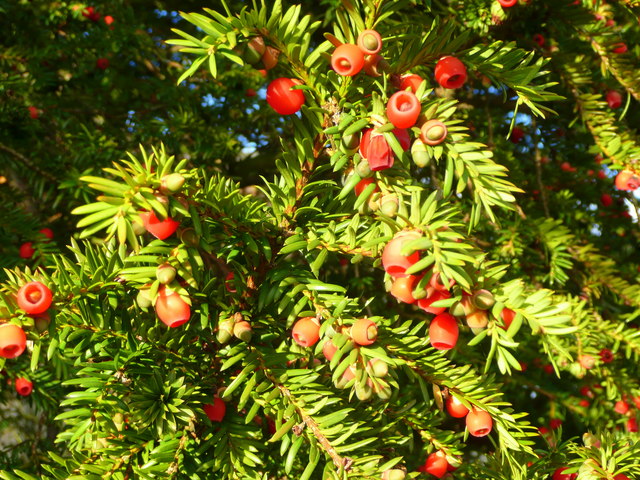Fruit of the yew
Introduction
The photograph on this page of Fruit of the yew by Jonathan Billinger as part of the Geograph project.
The Geograph project started in 2005 with the aim of publishing, organising and preserving representative images for every square kilometre of Great Britain, Ireland and the Isle of Man.
There are currently over 7.5m images from over 14,400 individuals and you can help contribute to the project by visiting https://www.geograph.org.uk

Image: © Jonathan Billinger Taken: 21 Oct 2008
Taxus baccata in St. John's churchyard. The seed cones are highly modified, each cone containing a single seed 4–7 millimetres (0.16–0.28 in) long partly surrounded by a modified scale which develops into a soft, bright red berry-like structure called an aril, 8–15 millimetres (0.31–0.59 in) long and wide and open at the end. The arils are mature 6-9 months after pollination, and with the seed contained are eaten by thrushes, waxwings and other birds, which disperse the hard seeds undamaged in their droppings; maturation of the arils is spread over 2-3 months, increasing the chances of successful seed dispersal. The seed itself is extremely poisonous and bitter. The aril is not poisonous, and is gelatinous and very sweet tasting. Ref Wiki.

